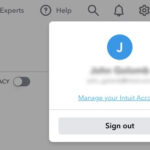Are you wondering, “Can I Make Estimated Tax Payments Online?” Yes, you absolutely can make estimated tax payments online, offering a convenient way to manage your taxes and avoid potential penalties; gmonline.net is here to guide you through the process. Paying estimated taxes online is secure and straightforward, allowing you to fulfill your tax obligations efficiently. Stay tuned as we explore how to pay your estimated taxes electronically, using options like IRS Direct Pay and EFTPS, to simplify your tax responsibilities.
1. Who Needs to Pay Estimated Taxes?
Estimated taxes are for those whose income isn’t subject to withholding or isn’t enough to cover their tax obligations. Let’s break down who typically needs to pay estimated taxes:
- Self-Employed Individuals: If you run your own business, whether it’s freelancing, contracting, or a full-fledged enterprise, you’re likely responsible for paying estimated taxes. This includes sole proprietors, partners, and S corporation shareholders.
- Investors: If you receive income from investments, such as dividends or capital gains, and the amount isn’t covered by withholding, you’ll probably need to pay estimated taxes.
- Gig Economy Workers: With the rise of the gig economy, many individuals earn income through various platforms and short-term jobs. If taxes aren’t withheld from these earnings, estimated tax payments may be necessary.
- Retirees: Retirees receiving income from sources like pensions, annuities, or retirement accounts may also need to make estimated tax payments if their withholding doesn’t cover their full tax liability.
- Those with Significant Unearned Income: Anyone with substantial income from sources other than wages, such as rental properties, royalties, or alimony, may need to pay estimated taxes.
Generally, you’ll need to pay estimated taxes if you expect to owe at least $1,000 in taxes when you file your return. Corporations must generally make estimated tax payments if they expect to owe $500 or more.
To determine if you need to pay estimated taxes, consider if your tax liability was more than zero in the prior year. If so, use Form 1040-ES, Estimated Tax for Individuals, to assess your situation.
2. Who Is Exempt from Paying Estimated Taxes?
Not everyone needs to pay estimated taxes. Here are the exceptions:
- Wage Earners with Sufficient Withholding: If you receive a salary or wages and your employer withholds enough tax from your earnings, you can avoid paying estimated taxes. To ensure this, complete Form W-4 and give it to your employer, specifying any additional amount you want withheld.
- Meeting the “No Tax Liability” Criteria: You don’t have to pay estimated tax for the current year if you meet all three of the following conditions:
- You had no tax liability for the prior year.
- You were a U.S. citizen or resident alien for the whole year.
- Your prior tax year covered a 12-month period.
You had no tax liability for the prior year if your total tax was zero or you didn’t have to file an income tax return. For additional information on how to figure your estimated tax, refer to Publication 505, Tax Withholding and Estimated Tax.


